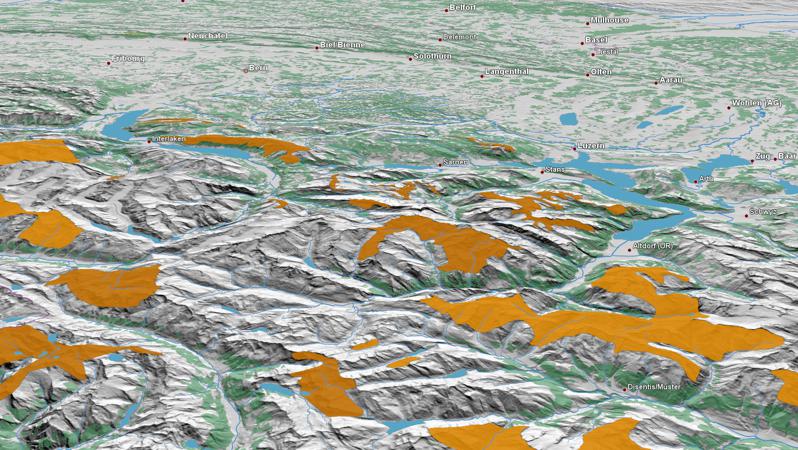Aree con stambecchi d’importanza nazionale

Lo Stambecco alpino, lunghezza testa e corpo di 115-170 cm e peso di 35-150 kg, è caratterizzato da un corpo massiccio e tozzo sostenuto da solide zampe. Il maschio adulto ha una corta barba. La femmina è di norma più piccola e più gracile. Le corna possono raggiungere nei maschi 1 m di lunghezza e sono a forma di sciabola, rivolte all’indietro e provviste di nodi regolari e ben marcati sulla
Visualizza la carta nell’atlante
Aree con stambecchi
Parole chiave: Paesaggio e Territorio, Paesaggi/Habitati, Zone protette, Tempo libero, Protezione della natura
Estensione spaziale: Svizzera
Unità temporale: 2015
Elementi della carta: Albris, Alpstein, Augstmatthorn, Bire-Oeschinen, Blattenstock, Brienzer Rothorn, Brisen, Cadagno, Cape au Moine-Chaussy, Chablais, Chamossaire, Churfirsten, Creux-du-Van, Dent de Lys, Fluebrig-Forstberg-Längenegg, Flüela-Rätikon, Foostock, Gadmerfluh, Gasterental, Graue Hörner, Gross Lohner, Hutstock, Julier, Justistal, Macun-Terza-Sesvenna, Nufenen, Oberalp-Tödi-Calanda, Oberwallis, linke Flussseite, Oberwallis, rechte Flussseite, Olden, Pierreuse-Gummfluh, Pilatus, Rothorn-Weissfluh-Hochwang, Safien-Rheinwald-Adula-Messocco, Schwarzmönch, Spillgerten, Susten-Meiental, Umbrail, Val Verzasca, Valais central, rive droite, Valais central, rive gauche, Valle Maggia-Robiei, Valle Onsernone, Vanil Noir-Bimmis, Wetterhorn, Wittenberg
